Los Angeles is home to so many eccentric museums that the city practically has its own ever-growing genre of weird museums with sundry specialized themes ranging from ice cream to death. Among these, one of the oldest and most intriguing is the Museum of Jurassic Technology. Everything about this institution is so otherworldly that it is unique even among unusual museums.
The first question one asks is: What is the Museum of Jurassic Technology? A satisfactory answer is complicated by the fact that many who have visited insist that it is impossible to explain; you have to go there. That’s true, as with any artwork—and the Museum of Jurassic Technology is best approached as an artwork. Founded by artists David Hildebrand Wilson and Diana Drake Wilson, this expansive multi-story walk-in cabinet of curiosities can be interpreted as a commentary on epistemological doubt. The confusion engendered by its improbable name is only the beginning. You’re unlikely to ever understand how it got its title; after visiting you may find yourself even more perplexed. The dissonance between this institution’s mysterious title, its physical existence, its eccentric displays accompanied by specious claims, and its status as a real museum is a bit overwhelming. Never knowing what to expect is part of its charm.
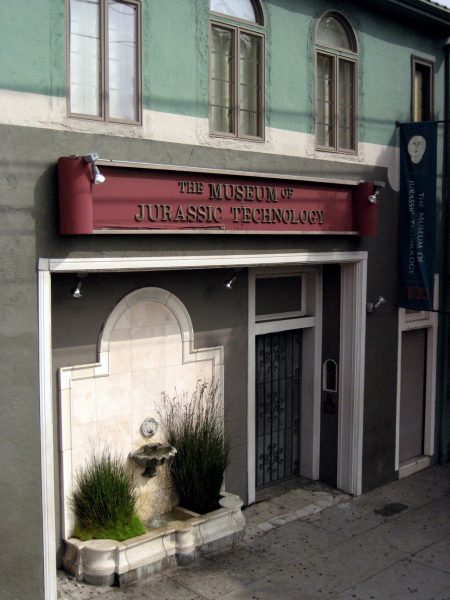
Its outside is plain. Except for the small, reedy fountain trickling next to its entrance, the Museum of Jurassic Technology doesn’t look much different from the other buildings in its neighborhood. Exterior understatement sets the stage for the bizarre experience that begins as you open the door, abandon the bright outdoor afternoon, and enter the cramped dim gift shop. Museum-as-performance-and-installation commences as the desk attendant informs you that photography and cell phones are not permitted.
Upon paying the modest admission fee, you traverse a short passageway and arrive at a video playing on a screen in a dark recessed corner of a cramped introductory area. Evidently, this is the orientation video; and since there are neither signs nor maps, its contents seem particularly important. Actually, it is not so much a video as a black-and-white slide show with pictures of antiquated bookplate appearance, accompanied by a soundtrack where a nasal-voiced narrator elliptically expostulates on the history of museums and the origin story of this institution. Extreme spuriousness sneaks up on you all the more stealthily for being inextricably embedded in apparently credible facts.
As the orientation video alludes, this museum has the feel of a private collection, a cabinet of curiosities, and a small-scale natural history museum, all combined into one. Baffled by the unusualness of it all, you are not sure where to go next. As in a maze, there are a number of directions you could take among murky halls and chambers abounding with bizarre exhibits.
Elaborate displays are impressively wrought. From a miniature waterfall to replicas of recondite theatrical props to dioramas superimposed with holograms and eerie soundtracks, each exhibit is an ingeniously fashioned work of art. 3D effects captivatingly enliven slideshows and vignettes. Microscopes and viewing glasses give infinitesimal artworks a scientific feel, like you’re seeing another side of the world. Cozily arranged divans of antique appearance surround slideshows and technologically outmoded videos. Miniature dioramas and replicas are so detailed and carefully lit that they evoke feelings of actually inhabiting their depicted place, despite their tiny scale. Indeed, the founder once created miniature models for the film industry.
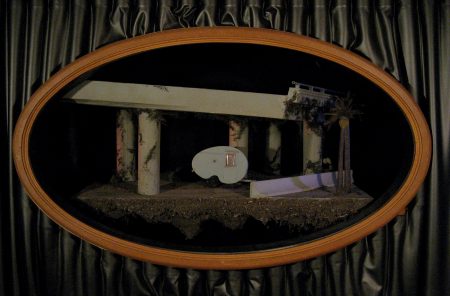
The more you progress, the more curious you become, yet the more spurious the exhibits seem. Verbose plaques enumerate copious minutiae about enigmatic artifacts. Windy narrations emanate on demand from retro spring-corded telephones. While the labels and audio narrations bloviate at length about how the curios relate, they never seem to explain much. As you progress through the tenebrous halls, your disbelief becomes more acute, but the exhibits are so captivating that you want to keep going, to keep listening to the strange nasal voices and absorbing the puzzling bizarrerie of relics and glass vitrines and keep wondering and being surprised and wondering again, never knowing what strange sight you’ll encounter next.
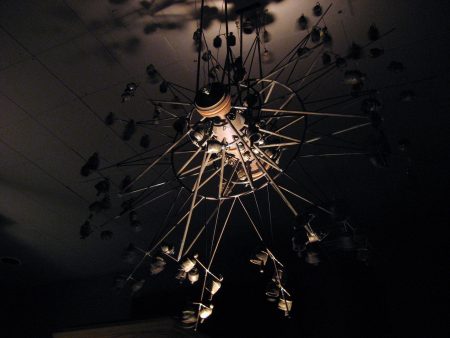
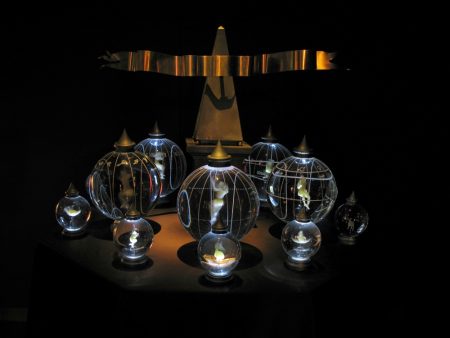
Showcase-packed spaces being cramped, you constantly find yourself awkwardly moving out of someone’s way. The diminutive homey chambers and dim hallways evoke domesticity that runs counter to the eclectic exhibits’ utter bizarreness and the didactic materials’ academic affectations.
The musty-smelling halls are suffused with old-timiness augmented by the phone prohibition. At least the orientation slideshow narrator was correct in his proclamation that the museum is a “walk back in time.”
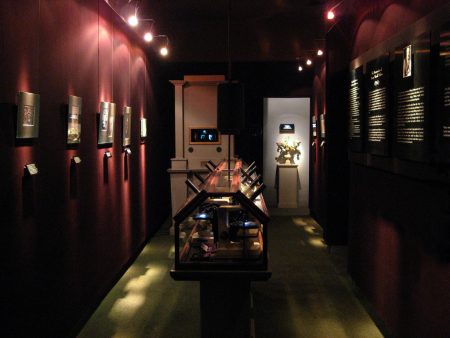
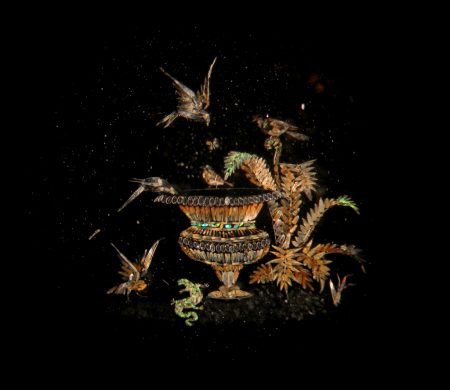
As you proceed through the bewildering labyrinthine corridors, you become more and more disoriented by the utter oddness of the whole experience. Reality seems surreal; paranoia sets in; and you feel like a rat under observation running through a maze.
Exhibits and display areas exude stilted artificiality for their meticulous contrivance and the extensive lengths to which the museum seeks to “educate” its visitors on minute details of objects, people, and events that would be boring and insignificant were they not presented in such an artistic fashion within the mysterious environs of the museum.
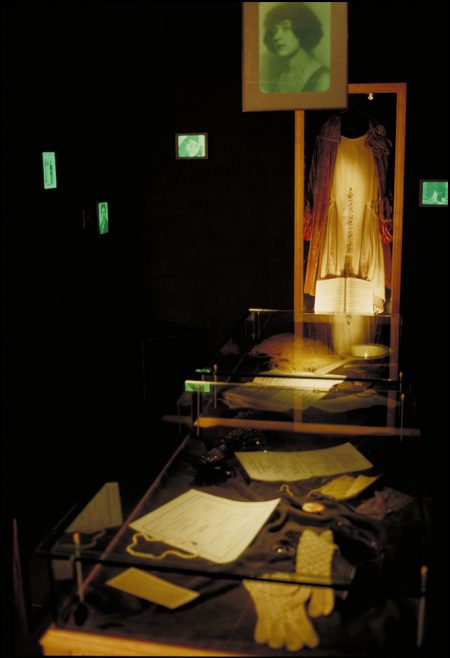
The pointed staidness of deadpan multimedia presentations wittily belies the insidious frivolity of their topics and scripts. As you sit on a velvety divan, wearing 3D glasses watching “The World is Bound by Secret Knots,” you want to laugh at the museum for being so hushedly serious about a quizzical ruse of a narrated slideshow, and to laugh at yourself for being a part of this wacky, fascinating scenario. Yet is this any more artificial or any sillier than sitting on a bench before a glass-encased diorama at a natural history museum, contemplating stuffed dead animals posed before painted backgrounds?
The reliability of information provided by venerable institutions is normally taken for granted. Subverting this paradigm, this museum instead emphasizes the idea that history is an inseparable blend of fact and fiction; science is a colloidal mixture of knowledge and speculation.
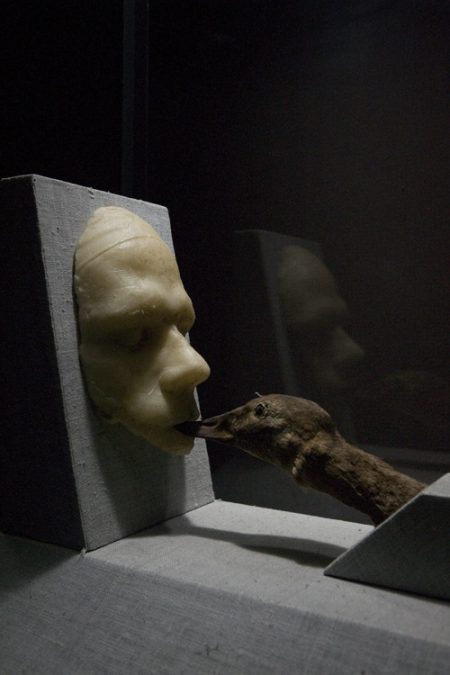
The facade of veracity succumbs to the realization that you, the visitor, are being had. Blatant balderdash is interspersed with real names, facts, and figures. Is this so different from what we customarily accept as reality? Scientific theories are constantly being disproved. Medical techniques are discarded in favor of new technology. History is rewritten as divergent facts and theories emerge. Cornerstones of everyday life are embedded with inaccuracies.
Bringing to light how little we know is what makes this peculiar museum so satisfyingly relevant. It sharpens one’s skepticism about institutional narratives and indulges one’s curiosity about esoteric bits of knowledge. Even if everything were authentic and the back-stories were true, they are so improbable, so offbeat, so abstruse that you might not believe them anyway; but the effect of undermining one’s blind faith, while refreshing one’s interest in the quintessential museum paradigm, would be the same.
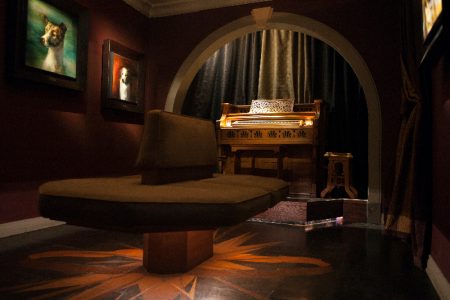
Reaching the end of the catacomb, you finally arrive at a relatively normal staircase made to seem grandly lofty by what you have just experienced. Ascending it, you happen upon an elegant Russian tearoom where you are served tea and cookies. Close by, in a little antiquated theater, you watch “Ashen Light,” a short, slow-moving 3D movie whose dreaminess is disjointed by malfunctioning 3D glasses—or are they malfunctioning?
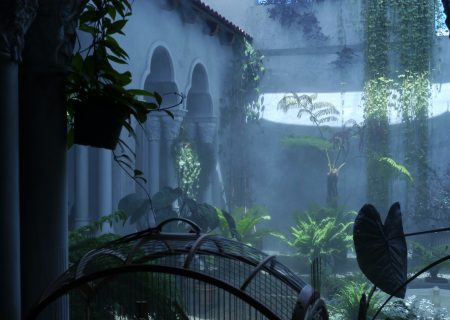
Redemption from the dark bowels comes when you ascend to the open-air rooftop where ringneck doves inhabit a plant-filled aviary just outside the tearoom. Here one tiny chamber harbors a columbarium beside open birdcages containing nests and eggs. The atmosphere here is as weird as the one inside; but in contrast to the dark catacombs, this aviary is suffused with airy light. It feels like you are not on a rooftop but in an entrancing outdoor garden upon an island in the sky. It’s a relief to be back in the fresh breath of reality, at least temporarily. But you must once again descend the staircase and, your path reversed, return through the bizarrerie from whence you came.
Exiting onto the street, your consciousness feels blurry, muddled by the singular experience. The day is nearly over, but you feel as though having just awoken from a surreal dream inside a magic cabinet to which you wish to soon return.
The Museum of Jurassic Technology is located at 9431 Venice Blvd., Culver City, CA 90232. For more information, see mjt.org.
All images courtesy of Museum of Jurassic Technology.